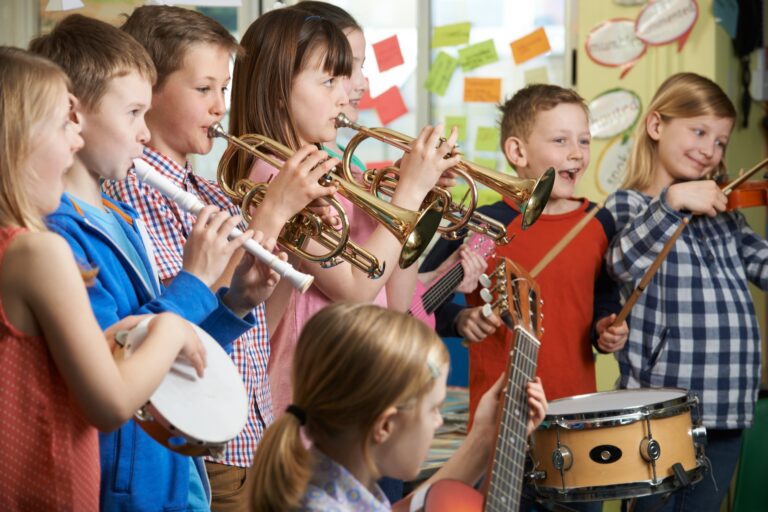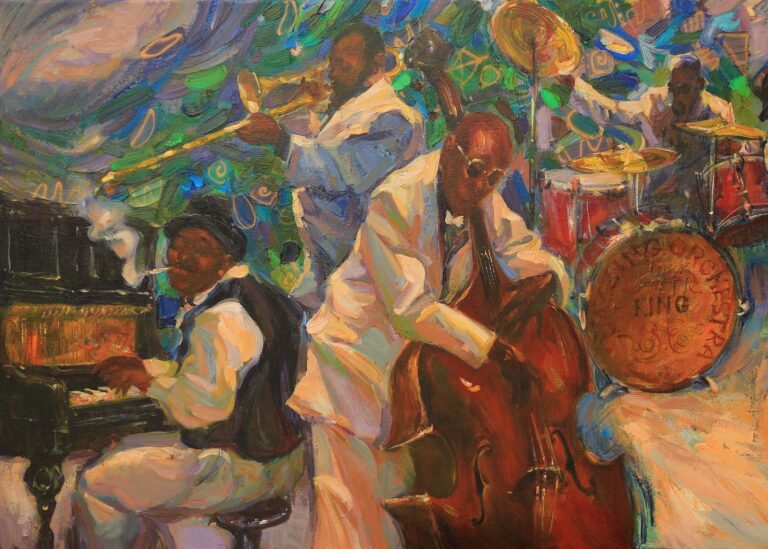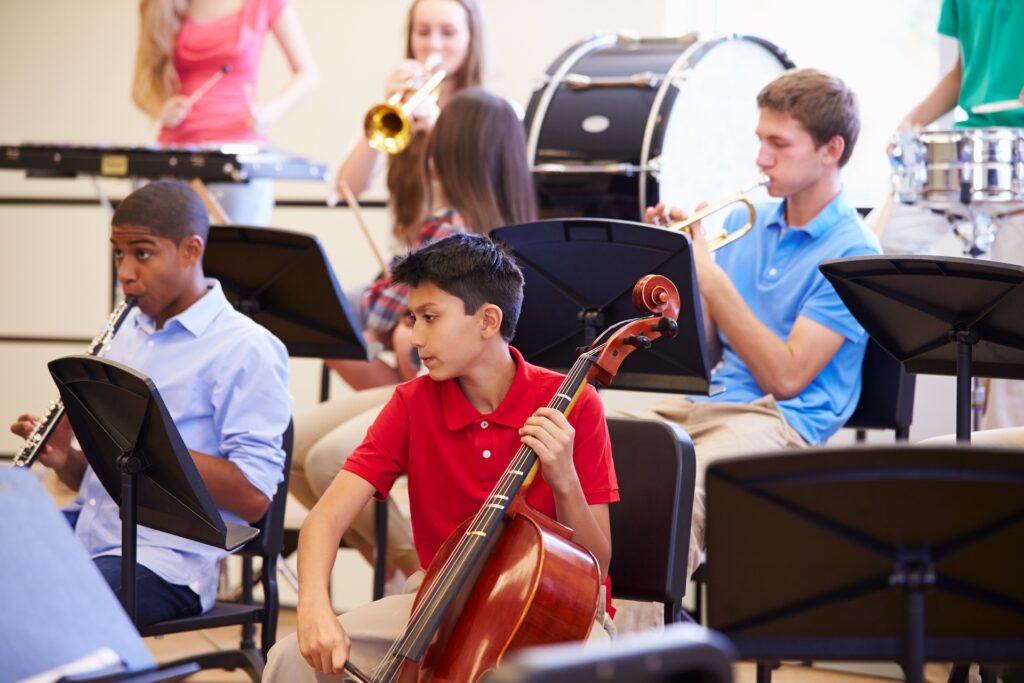
Getting to know classical music pieces suited for your level can help build your skills and enjoyment of playing in a band. Choosing music that matches your current abilities makes practice more rewarding and helps you improve steadily.
This article highlights 25 classical pieces specifically picked for second-year band students, offering a balance of challenge and accessibility. The selections will guide you through pieces that develop essential techniques while keeping your experience fun and motivating.
1. Holst’s Second Suite in F for Military Band
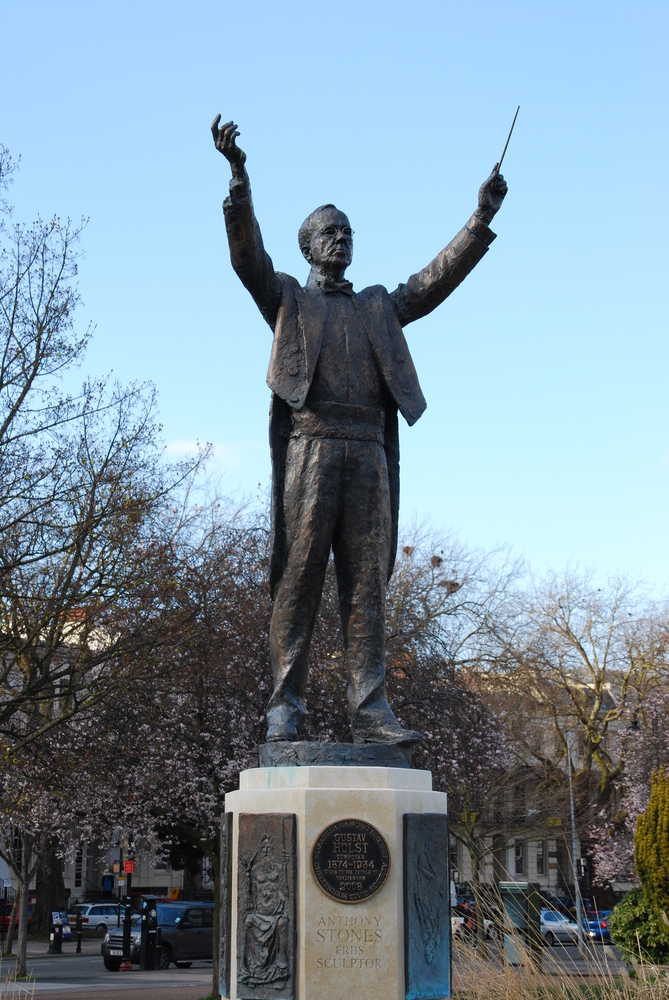
Holst’s Second Suite in F is an excellent choice for second-year band students. It offers a bit more challenge than his First Suite, helping you develop technical skills without being overwhelming. The varied movements keep things interesting with different moods and rhythms.
The suite has four movements, including the lively “March: Morris Dance” and the lyrical “Song Without Words.” These pieces introduce you to folk-inspired melodies, which are great for learning phrasing and musical expression.
Because it was written specifically for military band, the instrumentation highlights all sections fairly, giving your whole band a chance to shine. Playing this suite can improve your ensemble skills and balance as you listen to how your part fits into the whole.
Overall, the Second Suite in F is rewarding to play and pays off your effort with a satisfying musical experience. It encourages growth while still being accessible for your level.
2. Beethoven’s Symphony No. 5 (arranged for band)

Beethoven’s Symphony No. 5 is a fantastic choice for your second-year band. Its famous four-note motif is memorable and gives students a clear theme to focus on.
The arrangement for band allows players to explore Beethoven’s powerful and dramatic style without overwhelming their current skills. The piece challenges your group rhythmically and dynamically, helping students build solid ensemble playing.
It also introduces important musical concepts like phrasing and articulation, which are essential for developing musicians. Playing this symphony connects you to one of the most important works in classical music history.
Overall, it’s exciting and motivating for students to perform. You’ll hear the energy and drive that make this symphony so beloved, while also improving your band’s technical and musical skills.
3. Copland’s Appalachian Spring (wind ensemble arrangement)
Copland’s Appalachian Spring is a great choice for your second-year band because it combines beautiful melodies with accessible rhythms. The wind ensemble arrangement simplifies the original orchestration, making it suitable for developing players like you.
The piece features clear themes and open harmonies, which help you learn phrasing and tone control. Its folk-inspired tunes give you a chance to connect with American musical traditions without challenging technical demands.
Playing Appalachian Spring will also introduce you to a well-known work that’s frequently performed in band settings. It encourages musical expression while supporting your growth in ensemble balance and listening skills.
Overall, this arrangement offers a rich musical experience without overwhelming you. It’s ideal for strengthening your confidence and musicianship in a supportive environment.
4. Sousa’s Stars and Stripes Forever (John Philip Sousa)

“Stars and Stripes Forever” is a classic American march that offers a great learning opportunity for your second-year band. Its memorable melodies and clear rhythmic patterns help build your skills in timing and ensemble playing.
The piece has sections that vary in dynamics and tempo, which means you’ll get plenty of practice in expressive playing. The piccolo obbligato in the trio adds a fun challenge for higher-pitched instruments, while the brass and percussion parts reinforce strong rhythmic support.
This march is widely recognized and often performed, making it motivating to learn. Playing it will also connect you to a rich history of American band music and tradition. It’s ideal for helping you develop steady rhythm, teamwork, and performance confidence.
5. Gould’s American Salute
Morton Gould’s American Salute is a patriotic piece based on the folk tune “When Johnny Comes Marching Home.” It offers a great introduction to American themes and melodies, helping you connect with familiar music in a band setting.
This piece is well-suited for second-year band students because it balances challenge and accessibility. The rhythms and harmonies are straightforward, but it still requires developing control and expression. Playing this will help improve your dynamic range and ensemble awareness.
American Salute also adds excitement to your repertoire with its lively and engaging style. It encourages teamwork as you listen closely to blend brass, woodwinds, and percussion. Overall, it’s rewarding to perform and a popular choice for school bands looking to learn a classic American piece.
6. Gershwin’s Summertime (arranged for concert band)
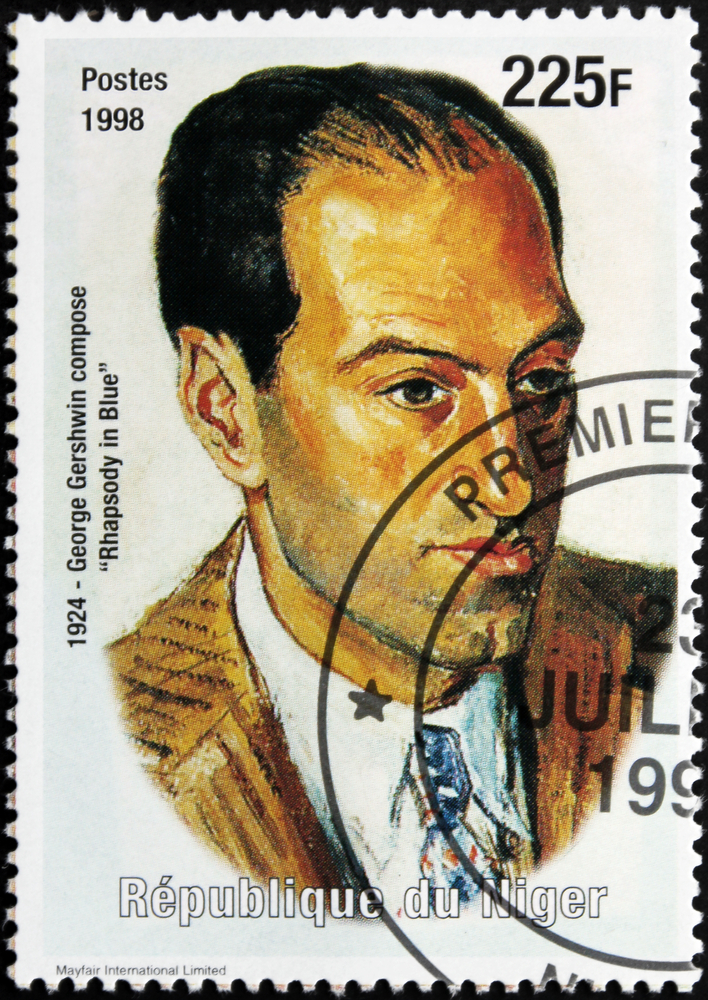
Gershwin’s Summertime is a great choice for your second-year band. The arrangement offers clear melodies and harmonies that help you develop your phrasing and dynamic control. It’s also a piece that feels familiar and rewarding to play.
The concert band version features a smooth, flowing style that encourages legato playing. This helps you practice playing with expression and working together as a section.
The piece is also accessible in range and technical difficulty, so you can focus more on musicality than on tricky notes. It provides opportunities to feature different instruments, giving your band a chance to showcase soloists while blending as an ensemble.
Overall, Summertime helps you build important skills like tone quality and balance, making it a useful and enjoyable addition to your repertoire.
7. Jenkins’ Playful Pizzicato
Playful Pizzicato by Nigel Hess is a charming piece that highlights pizzicato, where string players pluck their instruments instead of using the bow. This technique creates a light, bouncy sound that adds fun and texture to your band’s performance.
It’s a great choice for second-year students because it introduces them to different string techniques without being too difficult. The rhythms are straightforward, helping your band work on timing and coordination.
You’ll find the piece encourages attention to dynamics and articulation. These skills are important as your band progresses and prepares for more complex works.
Playful Pizzicato also stands out because it’s lively and engaging, keeping your students motivated and interested in playing. It’s short enough to learn quickly while still providing a sense of accomplishment when performed well.
8. Grainger’s Irish Tune from County Derry
Grainger’s Irish Tune from County Derry is a great choice for second-year band students because of its lyrical melody and straightforward structure. The piece features a beautiful folk tune that allows you to focus on phrasing and musical expression without complex technical demands.
The arrangement often highlights woodwinds and brass, giving every section a chance to shine. This helps you develop balance and listening skills crucial for playing in an ensemble.
The piece also introduces you to dynamics and subtle tempo changes, which are important for musical growth. You get to practice sustaining long, smooth notes while maintaining steady time.
Overall, Irish Tune from County Derry is both accessible and rewarding, making it a valuable addition to your band repertoire. It blends folk and classical styles in a way that keeps the music interesting and enjoyable to play.
9. Schuman’s Chester
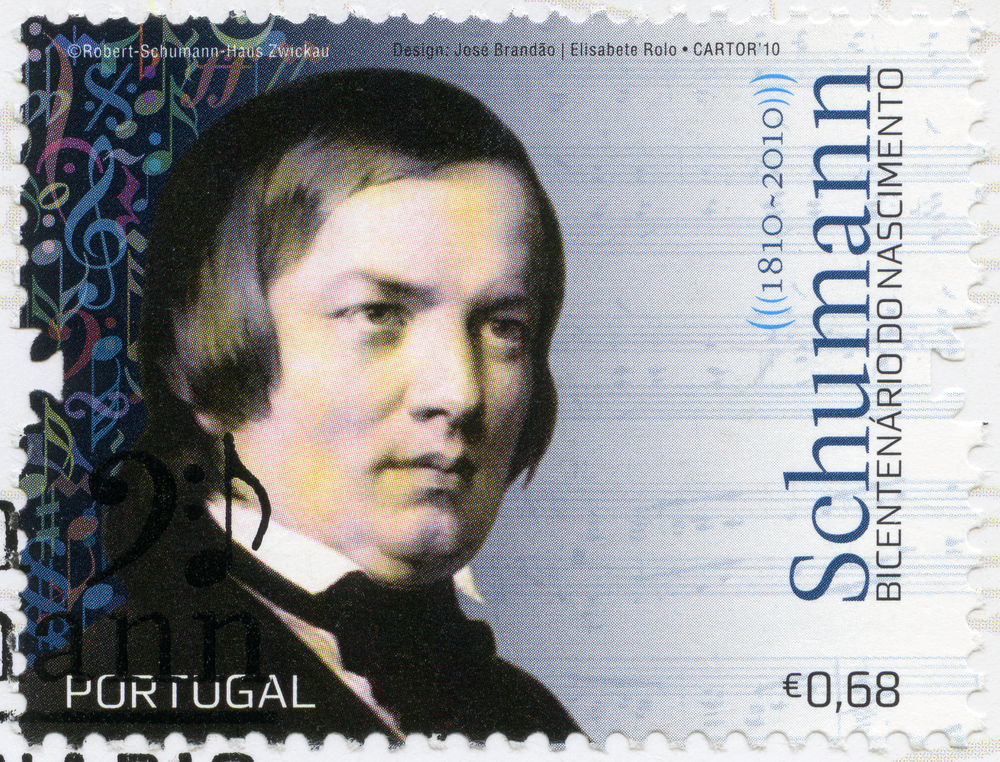
Schuman’s Chester is a great choice for second-year band students because it combines historical significance with approachable musical challenges. The piece is based on a hymn tune from the American Revolution, giving you a chance to connect with early American music.
The arrangement uses clear rhythms and melodic lines that help develop your timing and intonation. You’ll also encounter dynamic contrasts and harmonies that are interesting without being overwhelming.
Playing Chester introduces you to 20th-century music techniques. Schuman reshapes the original hymn with modern harmonies and rhythms, which helps you experience a blend of old and new styles.
This piece is engaging and educational. It fits well into your repertoire as it encourages musicality and ensemble playing while remaining accessible to developing musicians like you.
10. Mahler’s Fight Song and Finale

Mahler’s Fight Song and Finale offers an exciting challenge for second-year band students. The piece captures the spirit of determination and energy, making it motivating to play and listen to. Its bold rhythms and dynamic contrasts help develop your sense of timing and expression.
You’ll find clear melodies that allow different sections of your band to shine. This encourages teamwork and helps build confidence in playing louder, fuller sounds. The Finale also introduces some more complex rhythms without overwhelming you, perfect for strengthening your technique.
Playing Mahler at this level gives you a taste of late Romantic music’s emotional depth. It pushes your skills gently while keeping things fun and engaging. It’s a rewarding piece to perform, helping you grow as a musician alongside your classmates.
11. Ticheli’s Shenandoah
Ticheli’s Shenandoah is a great choice for your second-year band. It features a beautiful folk melody that is both accessible and expressive. The piece encourages careful phrasing and dynamic control, which are important skills at this level.
The music is not overly complex but still offers enough challenge to help you develop tone and ensemble playing. It also allows for lyrical playing, letting your group focus on musical expression rather than just technique.
You’ll find the flow of the piece calming, inspired by the imagery of a river. This gives you a chance to work on smooth transitions and create a connected, flowing sound.
Overall, Shenandoah by Frank Ticheli strikes a nice balance between musicality and playability, making it rewarding for your ensemble as you grow.
12. Benson’s Down a Country Lane by Aaron Copland
Down a Country Lane is a great choice for your second-year band. It was originally composed by Aaron Copland for young piano students, making it approachable yet musically interesting.
The piece has simple melodies and clear rhythms, which help develop your basic technical skills. It encourages expressiveness without overwhelming complexity, allowing you to focus on tone and phrasing.
You’ll also enjoy the nostalgic, pastoral feel in the music. The charming mood makes practicing more enjoyable while building important ensemble skills like balance and blend.
Because it has been arranged for various group sizes, including band, this piece fits well into your skill level. It helps you prepare for more advanced works by offering a well-rounded musical challenge appropriate for your stage.
Playing Down a Country Lane will strengthen your musical foundation and keep your experience rewarding through its accessible and lyrical style.
13. Williams’ Liberty Fanfare

Liberty Fanfare by John Williams is a bright and energetic piece perfect for second-year band students. The fanfare’s bold brass and rhythmic patterns help you develop confidence in playing together as a group.
The composition was created to celebrate the 100th anniversary of the Statue of Liberty in 1986. Its patriotic and uplifting feel makes it fun to play and motivates you to improve your technique.
This piece introduces you to syncopated rhythms and dynamic contrasts, which are great for building musical expression. It is challenging enough to keep you engaged without being overwhelming at this stage of learning.
Playing Liberty Fanfare will also give you a taste of John Williams’ style beyond his famous film scores. It’s a rewarding addition to your repertoire that showcases both your individual and ensemble skills.
14. Dello Joio’s Variations on a Korean Folk Song
Dello Joio’s Variations on a Korean Folk Song is a great choice for second-year band students. The piece introduces you to a beautiful Korean folk melody called “Arirang,” which is presented clearly in the woodwinds at the beginning. This helps you develop your listening and blending skills early on.
The work contains five contrasting variations, giving you a chance to explore different moods and techniques. These variations are not too challenging but still provide variety and keep rehearsals interesting.
Because the piece was originally written for wind band, it fits your instrument group well. You’ll get to practice tone control and balance as you hear how your part interacts with others around you. It also supports improving your dynamics and expression.
Overall, this piece is approachable but musically rewarding, making it a smart pick for your growing skills as a second-year player.
15. Barber’s Adagio for Strings (band arrangement) by Samuel Barber
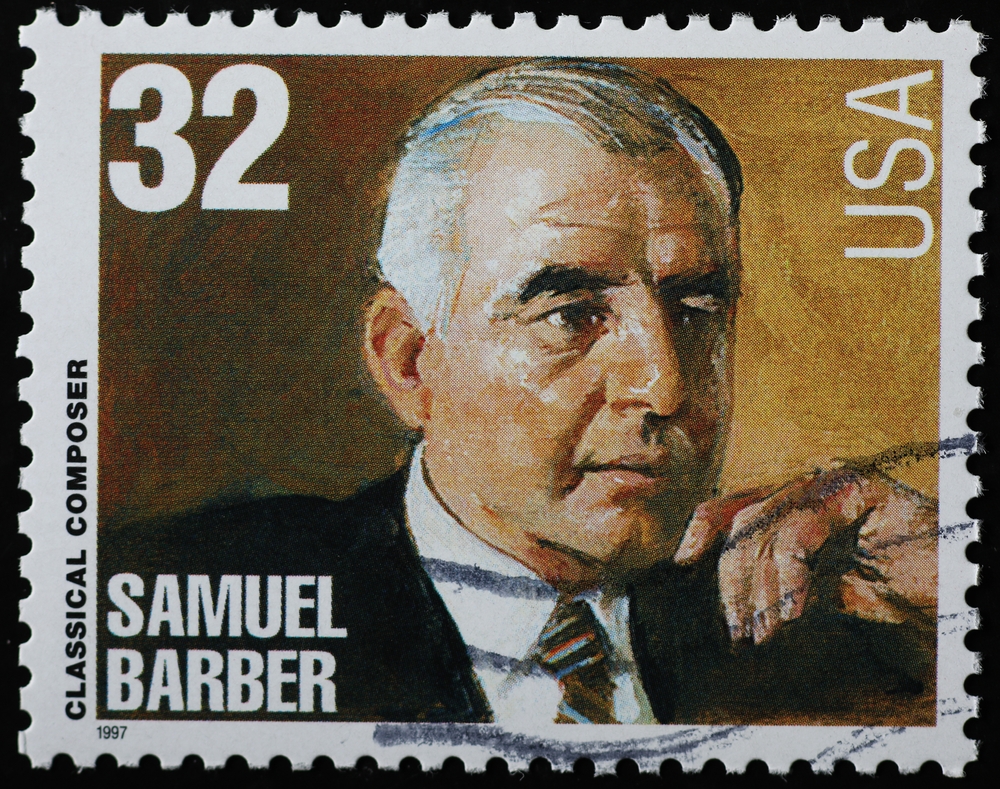
Barber’s Adagio for Strings is a beautiful and expressive piece that has been adapted for concert band. It offers second-year band students a chance to work on tone quality and dynamic control in a slower, lyrical setting.
This arrangement helps develop your listening skills as you balance your part with others in a more transparent texture. The haunting melody and emotional depth make it rewarding to play.
The piece is not technically demanding, so it fits well with your growing abilities without being overwhelming. It encourages careful phrasing and breath control, which are important skills at this stage.
Playing Adagio for Strings also introduces you to a notable work from the 20th century, expanding your musical knowledge beyond traditional band literature. It’s a good opportunity to experience music that connects with listeners on a deeper level.
16. Moret’s First Suite for Band
Moret’s First Suite for Band is a great choice for your second year in band. The piece offers a balance of challenge and accessibility, giving you a chance to develop your skills without feeling overwhelmed.
The suite is written in clear sections, which helps you focus on smaller parts rather than the entire work at once. This makes learning smoother and builds your confidence with ensemble playing.
You will find interesting melodic lines and harmonies that keep the music engaging. It also encourages strong attention to dynamics and expression, important skills for your growth as a musician.
Because of its structured form, Moret’s suite helps you understand how different movements in a band piece can relate to each other. This understanding is key as you prepare for more complex music in the future.
17. Reed’s Don Quixote
Reed’s Don Quixote is a great piece for second-year band students because it strikes a balance between challenge and accessibility. The work introduces you to programmatic music, where the band tells a story through sound—perfect for building musical imagination.
The piece features clear melodies and interesting rhythms without being overwhelming. This helps you develop your timing and tone while staying engaged with the adventurous character of Don Quixote.
Playing this piece also encourages teamwork. You’ll practice blending your sound with others and responding to different moods within the music. It’s a rewarding way to improve your listening skills and dynamic control.
Overall, Reed’s Don Quixote offers variety and excitement. It helps you grow as a musician by combining solid technical work with enjoyable storytelling through music.
18. Barnes’ Symphony No. 2, Movement 1 (band version)
If you’re looking for a piece that balances challenge and accessibility, Barnes’ Symphony No. 2, Movement 1 is a solid choice. The music offers rich harmonies and interesting rhythms that help you develop your ensemble skills.
This movement is structured to highlight expressive playing and dynamic contrast without being overly complex. It encourages attention to detail and phrasing, which are great for growing musicians.
The band version adapts well for a second-year group, providing parts that suit developing technical abilities while still sounding impressive. You’ll get to experience symphonic writing without frustration.
Playing this piece can also be motivating because of its strong melodic ideas. It’s a rewarding work that makes your band sound cohesive and mature.
Working on Barnes’ symphony will deepen your understanding of concert band repertoire. It’s a meaningful step toward more advanced pieces, making it perfect for your second year.
19. Clarke’s Colonial Song by Rebecca Clarke
Clarke’s Colonial Song offers a gentle introduction to early 20th-century chamber music. It features clear melodic lines and simple harmonies, which make it accessible for second-year band students.
You’ll find the piece manageable because it balances lyrical phrasing with straightforward rhythms. This helps you focus on tone quality and musical expression without being overwhelmed by technical challenges.
Playing Colonial Song also exposes you to a less commonly performed composer, Rebecca Clarke. This broadens your musical knowledge and appreciation beyond the usual classical repertoire.
The piece encourages sensitivity in your playing, as its mood is reflective and calm. It’s a great way to develop your dynamic control and attention to musical detail.
Overall, Colonial Song fits well in your repertoire when you want a piece that is both rewarding and suited to where you are in your learning journey.
20. Del Borgo’s Bell Cathedral

Del Borgo’s Bell Cathedral is a great choice for second-year band students. The piece uses clear, driving rhythms that help develop steady timing and ensemble skills.
You’ll find the harmonics and mutes in the middle section add variety without being too difficult. This gives your band a chance to explore different sounds while still staying accessible.
The lyrical middle section is well scored and contrasts nicely with the more energetic parts. This balance keeps your group engaged and motivated.
Overall, Bell Cathedral challenges your band just enough to grow their confidence and musicianship. The duration is manageable, so it fits well within typical rehearsal times.
Playing this piece gives students experience with dynamics and expression in a clear and rewarding way. It’s perfect for helping your band build a solid foundation.
21. Sweeney’s Festive Overture by Michael Sweeney
Sweeney’s Festive Overture is an excellent choice for second-year band students. It offers energetic rhythms that keep players engaged without overwhelming their developing skills. The piece balances excitement with accessible technical demands, making it a rewarding challenge.
You’ll find its bright melodies perfect for building confidence in your ensemble. The overture also encourages strong rhythmic precision while featuring clear, memorable themes. It’s a great way to develop tone and blend in a lively concert setting.
This overture helps you practice coordination and dynamic control. It’s written specifically with younger bands in mind, which means you won’t be stuck with parts that are too difficult. Playing this piece can boost your group’s musicality while keeping rehearsals fun and focused.
22. Middleton’s Sequoia Song
Middleton’s Sequoia Song offers a beautiful balance of melody and harmony, making it a great fit for your second-year band. The piece encourages careful listening and helps develop your sense of phrasing without becoming too technically demanding.
The rhythms are accessible, which allows you to focus on tone quality and ensemble blend. This helps build your confidence playing with others while improving your musical expression.
The flowing, nature-inspired theme paints a calming picture, making it enjoyable to play and to listen to. If you’re looking for a piece that encourages musical growth without overwhelming complexity, Sequoia Song is a solid choice for your repertoire.
23. Mackey’s Wine-Dark Sea (simplified excerpt)
Mackey’s Wine-Dark Sea is a powerful symphony for band that offers rich musical storytelling. For second-year band students, working with a simplified excerpt allows you to engage with complex rhythms and unique meter changes in a manageable way.
This piece introduces you to extended techniques for winds and percussion, helping to develop your skills beyond standard playing. The vivid imagery in the music, inspired by the Odyssey, makes it an exciting and motivating choice.
Playing a simplified version also helps you build confidence with challenging music while improving your sense of ensemble and dynamic control. It’s a great piece to connect with expressive playing and teamwork without being overwhelmed.
Overall, Wine-Dark Sea offers you a chance to explore new sounds while solidifying foundational band techniques in a fun and rewarding way.
24. Curnow’s American Folk Rhapsody No. 2
This piece by James Curnow is a great choice for second-year band students. It features well-known American folk melodies like Billy Boy and Shenandoah, which helps beginners connect with the music.
The arrangement balances simple rhythms with more lyrical moments. This mix keeps your students engaged without overwhelming them.
Playing this rhapsody encourages developing skills in phrasing and dynamics. It offers a chance to practice blending together as a group, which is important at this stage.
The piece also introduces students to rhapsodic form—moving between distinct sections with different moods. This helps build their musical understanding in a clear, approachable way.
25. Warner’s Rap the Drum! by Warner Classics
This piece is excellent for second-year band students because it introduces a dynamic blend of traditional classical rhythms with modern drum patterns. You get to practice coordination and steady timing on percussion, which is key at this level.
The percussion section plays a central role, making it fun and engaging for drummers and those learning about rhythm. It’s also a great way to explore different drum techniques relevant to both classical and contemporary music.
You’ll find the piece encourages teamwork since all sections must stay tightly connected to the drum beats. This sharpens your listening skills and helps build confidence in maintaining rhythm under pressure.
“Rap the Drum!” is a fresh choice that keeps students interested with its mix of old and new, preparing you for more complex percussion work in the future. It’s simple enough not to overwhelm but challenging enough to grow your skills.

